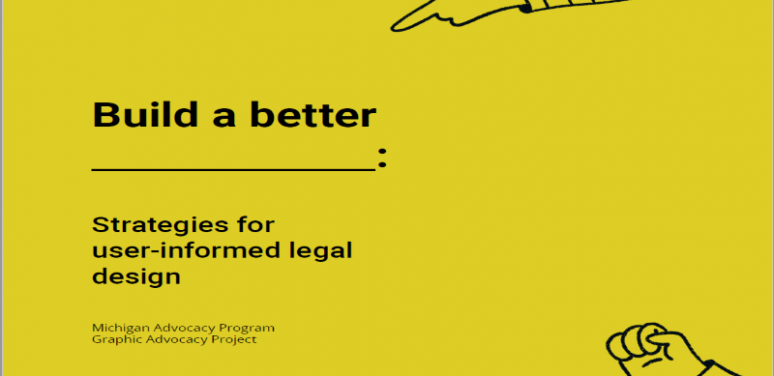
In 2019, the Michigan Advocacy Program (MAP) received a Technology Initiative Grant (TIG) from the Legal Services Corporation (LSC) to bring UX design and usability testing training to the justice community. After having struggled with these topics in the early days of Michigan Legal Help, and then learning how important they are, MAP wanted to help others in the community understand the basics of UX design and learn how easy usability testing can be. The goal of this TIG was to work with consultants to provide unique and accessible training opportunities and resources that would improve the usability of tools created by the justice community. After requesting and reviewing proposals, MAP hired the Graphic Advocacy Project (GAP), a nonprofit dedicated to designing legal resources through community-informed processes. Together, MAP and GAP sought to achieve four primary project objectives:
- Objective 1: Create and deliver to a group of 8-12 justice community partners a ten-week training module on UX design and usability testing for online tools to improve the usability of future tools and increase UX design and usability testing expertise within the justice community.
- Objective 2: Provide expert UX review of online tools designed/created by 8-12 justice community partners to improve the usability of existing tools and increase UX design expertise within the justice community.
- Objective 3: Host a day-long usability testing event where 8-12 justice community partners, under the supervision and direction of UX experts, engage in usability testing of their online tools and analyze their findings.
- Objective 4: Compile educational materials and learnings from all stages of the project into a best practices report and participate in at least one national training webinar or conference panel.
The best practices report is shared below. It includes User-informed legal design: a practical guide, recommendations for designing usable tools, and more!



